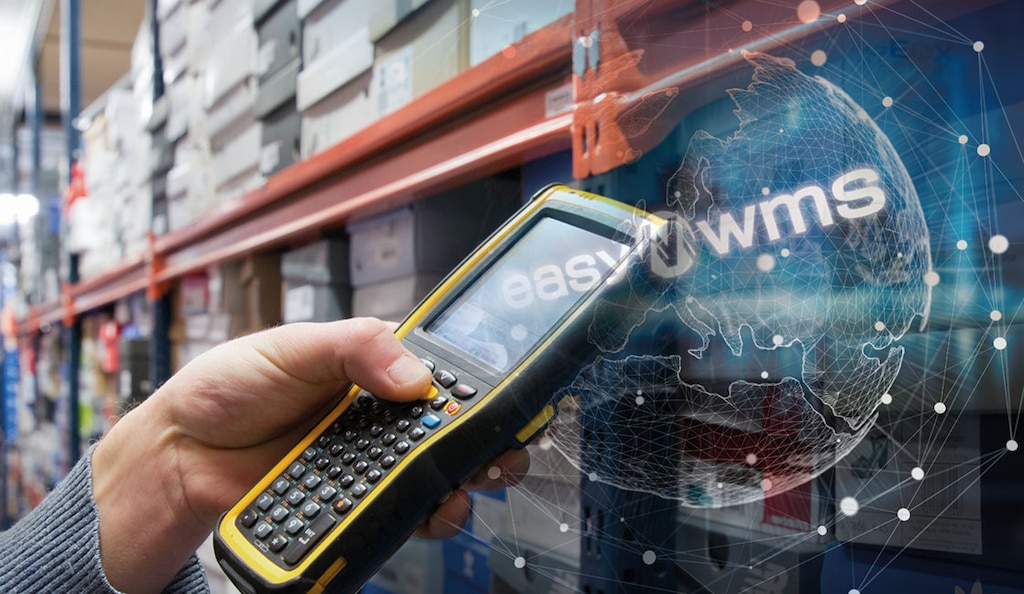
WMS implementation guide
WMS implementation ― the act of deploying a warehouse management system (WMS) — enables companies to digitize their logistics operations, eliminate errors, and coordinate all processes taking place inside and outside their facilities.
Investing in supply chain digitization is a competitive advantage in addition to an effective solution in responding to the complexities of Logistics 4.0. Trends such as free product returns, omnichannel, and SKU proliferation call for digitized and automated management to maximize efficiency in logistics facilities.
Why implement a WMS?
Warehouse management software is a digital program specialized in organizing, coordinating, and optimizing all the logistics processes of a company. The main aims of the software are to supervise goods and workflows to maximize throughput and, most importantly, eliminate errors in operations such as order picking, product allocation, and inventory control.
Real-time stock management and visibility is one of the main reasons to install a WMS. With an advanced logistics program, you’ll know how much stock is available and where it’s located at all times. The software automates location allocation in your warehouse based on criteria established in advance by the logistics manager.

A WMS controls the movement of goods in your facility while optimizing the routes traveled by the operators and the automatic equipment. The program indicates the most efficient pick paths, which helps to cut costs in this logistics stage. Additionally, among its many functionalities, the WMS coordinates the equipment used in order picking, from RF scanners and voice-picking devices to pick/put-to-light systems.
In short, a WMS is a key tool in managing the challenges seen with omnichannel warehousing, free product returns, shrinking delivery windows, and SKU proliferation. In the research article ERP systems and warehouse management by WMS, published by the Warsaw University of Life Sciences, the authors say: “Nowadays it is hard to imagine an efficient realization of logistics processes without IT tools that support them. The WMS program makes [it possible to speed up goods receipt and pickup at the warehouse, define an external supplier or specify interior origin, control goods in terms of quality and quantity, and automatically choose storage locations].”
WMS implementation process
In general terms, the implementation of a warehouse management system consists of the following distinct phases:
- Project launch: initial stage in which the client’s requirements, the tasks to be executed, and the chronology of the project are identified. In this phase, the operational processes and objectives must be documented by both the client and the WMS software provider.
- Solution design: the provider’s team of engineers designs a detailed solution based on a previous analysis of the client’s needs, goods flows, and operations performed in the facility, among many other factors. This phase requires full coordination between the client and the provider to define the software application as well as the configuration of the hardware and all equipment connected to the WMS.
- System configuration: prior to running the solution, the software provider must prepare the warehouse thoroughly. This ranges from properly configuring the terminals and workstations to training the employees and designating the number of available licenses. This stage includes the checks of all the preset functionalities, e.g., putaway rules, adequacy of workflows, the different statuses available for each SKU, and the correct warehouse design. Before going into production, the provider does a dry run to make sure the solution is ready to coordinate the processes performed in the facility.
- Go-live: in this phase, the software is put into operation. The WMS provider walks the client through the deployment process to verify that the design and configuration of the software meet the business’s logistics needs.

WMS implementation tips
The effective implementation of a WMS depends on the communication between the client and the software provider. Therefore, when you’re looking to install a WMS, it’s essential to previously put together the in-house team that will lead the execution of the project with the provider. The team should be familiar with how the warehouse works as well as the characteristics and needs of the organization.
Once the working team is defined, it’s time to create an internal software implementation plan with relevant information, i.e., the allocated budget, data migration, data backup, and actions to be carried out for the startup of the software.
The data collected by the software are key for ensuring the efficiency of the digitized processes. Likewise, when migrating from one system to another — or during the information dump if the facility doesn’t have another program — it’s crucial to make sure that no errors occur.
Lastly, before the software is deployed in the production environment, the team designated by the company should coordinate with the software provider to train the operators on the program’s functionalities. The usability of warehouse management programs facilitates operator training and shortens deployment times.
A trusted provider for your WMS implementation
Deploying a WMS in a warehouse is a logistics milestone for any business: it involves digitizing processes and minimizing the risk of errors due to manual management and handling. Nevertheless, digital management success doesn’t just lie in the advanced functionalities of the software. It also hinges on the provider’s ability to design a personalized software solution in line with the client’s needs and characteristics.
At Interlake Mecalux, we’re experts in creating and implementing end-to-end intralogistics solutions. Easy WMS, our warehouse management system, coordinates processes in more than 1,000 facilities in 36 countries and has been included in the 2022 Magic Quadrant for Warehouse Management Systems by consulting company Gartner.
Interested in making your logistics processes more efficient with trusted software that will maximize throughput in your facility? Don’t hesitate to contact us. One of our expert consultants will offer you the best digital solution for your organization.
